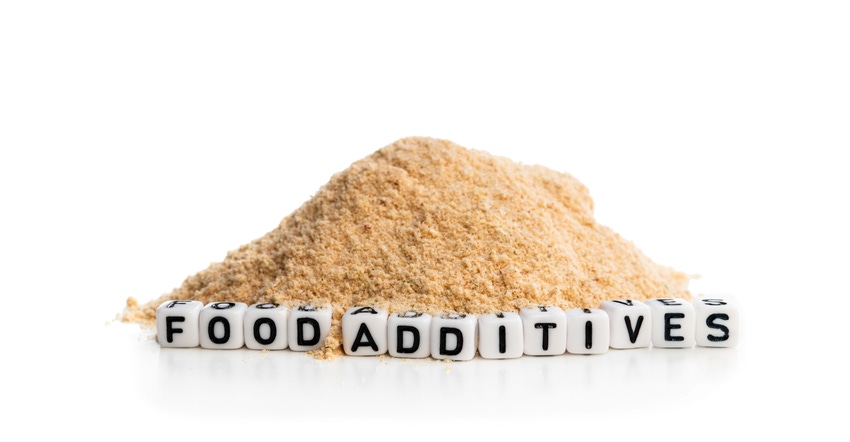How the FDA Is Tackling Food Chemical Safety
FDA Deputy Commissioner for Human Foods Jim Jones discusses challenges, requirements, and future steps needed to fuel the agency for growth.

Deputy Commissioner for Human Foods at the US Food & Drug Administration Jim Jones led a recent webinar hosted by Alliance for a Stronger FDA on food chemical safety. Jones gave some insight on current FDA plans and what to expect in the near future.
The Alliance was created in 2007 as a member organization to advocate for increased appropriations for the FDA and educate policymakers and the public about the FDA's mission and responsibilities.
“Now and in the future, enhancing food chemical safety is one of the ways we are working toward ensuring food is a source of wellness,” said Jim Jones. And while the vision is already in place, Jones added, once the new structure is in place, the agency will have an organizational framework that supports and facilitates a systematic risk management approach to achieving it.
This should ease consumers’ minds for more stringent food safety rules. For food and chemical manufacturers, however, it could be a big change.
“We had hoped that this would be a banner year for the food chemical safety program.” The FDA, he said, put in the largest budget increase ever — which was $19 million dollars and 40 FTEs (full-time equivalent) for chemical reassessment.
However, Jones goes on to say that the second half of its fiscal year 2024 expects to be flat to FY 2023. He said the request would have allowed the agency to be more ambitious in the amount of existing chemicals being assessed as well as make it a faster process.
Federal vs. State Jurisdiction
Jones said that with the introduced and passed bills by the states, there is significant movement to ban certain food additives and to establish environmental contaminants in food, which is not what the FDA wants. “Having states issue bans are within their rights but is not ideal,” he said.
States partner with FDA and play a crucial role in regulating the food supply, Jones advocates, yet the FDA needs to lead food chemical safety, because access to safe foods shouldn’t be dependent on where you live in the US.
“Reassessing the safety of chemicals and food is a priority for the FDA.”
With a heavier workload, the FDA sees a resource base that is “decreasing” due to a budget with no growth and accounting for inflation.
New food ingredients, food contact materials and production techniques have increased the workload, but it also has increased the complexity of the work.
Chemical Reassessments
The budget constraints can be seen in the most recent update to the chemicals under review, which was on March 4, 2024, Jones said. “We have taken our first steps toward providing more transparency on where we are in our chemical reassessment process as it pertains to specific chemicals,” he said, adding that FDA will at a minimum annually update the list to share where the agency is in the review process with the chemicals listed.
Two processes are needed for a systematic framework — a process and criteria for selecting chemicals for reassessment and a process for reassessments themselves. FDA is working on criteria that will determine which chemicals should be reassessed.
What it boils down to is that the FDA needs resources it doesn’t have and that is why the chemical reassessment program, as well as others, will suffer. The agency has asked industry and consumer advocacy stakeholders to propose criteria. A coalition of industry and public health organizations are also working on criteria to recommend.
With regard to timelines on these reassessments, Jones hopes by FY 2025 the agency will be setting realistic timelines. He stated they are committed to a “science-based process” for this. He plans to relegate a dedicated staff to pre-market safety evaluation and a team for post-market safety reviews.
Jones said there are now 5 FTE to support the existing chemicals work of the FDA, specifically to establish a group dedicated to post-market reassessment in the office of food additives.
Here is the current list of 21 chemicals up for reassessment. The page also includes the steps in the FDA risk review process.
Packaging & PFAS
Last week, the FDA announced the market phase-out of grease proofers that contain PFAS. With food manufacturers no longer selling these substances for use with food packaging in the US, it will eliminate the primary source of exposure to PFAS from food contact applications, explained Jones.
Next, the agency will finalize a method for testing packaging for the phase-out substances.
Last month, FDA conducted a sampling to begin collection of various packaging to get a better understanding of products made that have used the grease proofers.
Chemical Contaminants
An example of recent work in this area is the October FDA recall of applesauce pouches with cinnamon, which led to future recalls of additional brands. After visiting the cinnamon manufacturing site as well as performing research, the agency found lead chromate was the contaminant. Jones stated it was likely an economically motivated adulteration. Six cinnamon brands were recently listed as a public health alert by the FDA, with hopes the manufacturers will recall them. The ingredients did contain lesser levels of lead than those found in the applesauce pouches.
Note: FDA does not have the authority to require companies to conduct product testing for heavy metals in food. Jones said the agency is working to change that by asking Congress for additional authority to require product testing of foods for contaminants and make records of results available for FDA review.
For now, the FDA is asking both domestic and foreign suppliers to conduct voluntary testing of their products.
“There are 15 million lines of food coming in from importing from a single unit to pounds,” Jones explained. “FDA uses AI to figure out which lines they are going to sample; we can only do 1,000 lines per year.”
FDA Tools
Many tools are available through the FDA regarding compliance and food chemical safety. And it starts inward. Artificial intelligence is being used to help find the best quality and relevant information for their work and to enhance their resources. The agency hopes to bring in more innovative solutions in the coming years.
There are documents and tools available for food and chemical manufacturers who have questions on what the FDA has jurisdiction over and what rules apply. A few are listed here:
Transparency as well as GRAS (generally recognized as safe) notifications are critical for the industry.
Foreign Supplier Verification Supplier Program – There is a high degree of non-compliance with this, Jones said. “We are going to do education and enforcement and help the importing community to understand their duty and take enforcement action for compliance.”
About the Author(s)
You May Also Like




